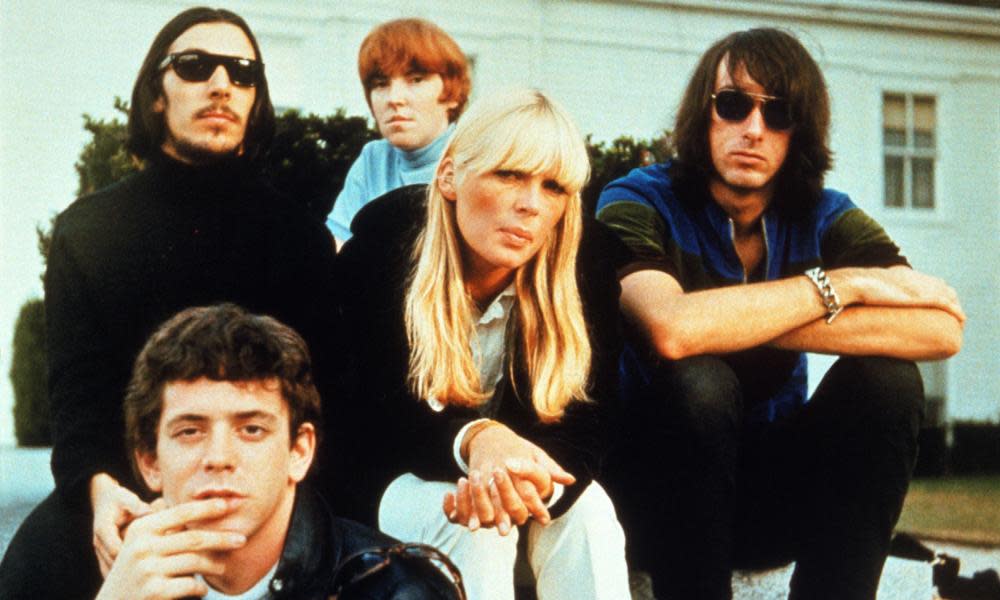You Are Beautiful and You Are Alone by Jennifer Otter Bickerdike review – the biography of Nico

In 1966, the artist Andy Warhol was booked to appear at the annual banquet for the New York Society for Clinical Psychiatry. Rather than give a speech, he brought along the Velvet Underground, the house band at his Factory studio, to perform instead. The evening marked the German model Nico’s first appearance with the band, which also comprised Lou Reed, John Cale, Sterling Morrison and Moe Tucker. As diners tucked into their main course, “the Velvets started to blast, and Nico started to wail”, recalled Warhol in his book POPism. Factory gadabouts Edie Sedgwick and Gerard Malanga climbed on to the stage and danced with bullwhips, while two film-makers rushed into the room wielding bright lights and Super 8 cameras and began loudly interrogating startled attendees about their sex lives. The next day, the event – more art prank than performance – was written up in the papers, with the headline in the New York Herald Tribune declaring: “Shock Treatment for Psychiatrists.”
It was a pivotal night for Nico, whose presence and distinctive deep alto would raise the profile of the Velvet Underground and inject their shows with an otherworldly, melancholy glamour. It also forms a significant moment in You Are Beautiful and You Are Alone, the cultural historian Jennifer Otter Bickerdike’s account of the life of Christa Päffgen (she adopted the name Nico in her late teens). Before joining the Velvet Underground, Nico had spent more than a decade working as a model and sometime actor – she appeared in Fellini’s La Dolce Vita after the director spotted her standing on the set and offered her a role on the spot. But while she enjoyed the lifestyle modelling afforded her, she objected to being intellectually patronised or regarded as a blank canvas, and was uncertain about the path her life should take. Though not all the members of the Velvet Underground were thrilled at her joining – Reed didn’t want her singing all his songs; Warhol said he wouldn’t manage them without her – she felt at home among artists and avant-garde musicians, and her year-long spell with the band launched a career that would occupy her until her death at 49 following a bicycle accident.
Otter Bickerdike sets out her stall at the start of the book: to lay waste to the myths and stereotypes that have clung to Nico, to cut through the misogyny and reclaim her narrative from those who see her primarily as a sexual object and muse rather than a creative force in her own right. As well as documenting Nico’s early life and rise to fame in the late 1950s and 60s, Otter Bickerdike’s aim is to examine the post-Warhol, post-Velvets years during which she toured Europe and America and made solo albums, all the while trying to manage a catastrophic heroin habit.
In some of this, the author is successful. The book is detailed and comprehensive in its research – more than 100 of Nico’s friends, ex-lovers and acquaintances were interviewed and archives methodically trawled. Much of Nico’s allure as a performer and a personality rests on a perceived mysteriousness that was partly influenced by her coolly monosyllabic manner, but also by the gaps in her story. Otter Bickerdike painstakingly fills in these gaps, piecing together Nico’s family history, her early years bearing witness to atrocities in Nazi Germany and her eagerness to leave for a better life. Nonetheless, it’s frustrating to find a writer tackling the sexism that made Nico’s career as an artist an uphill struggle, and the relentless fixation on her beauty, while liberally deploying gendered language such as “songstress”, “chanteuse” and “the German beauty” (wouldn’t “singer” suffice?). Also grating is the space given to male assessments of her attributes. While it is, of course, helpful to understand the male gaze and the extent to which Nico’s sexual magnetism seemed to paralyse the men who crossed her path, it’s hard to fathom the author’s inclusion of a long, lasciviously detailed and ultimately humiliating account of the singer’s oral sex technique on the Doors’ singer Jim Morrison, as relayed by the band’s keyboardist Ray Manzarek.
Elsewhere, however, the book gets closer to understanding Nico than most, even though, as a portrait, it isn’t always flattering. She is self-absorbed, self-destructive, needy and sometimes volatile. An incident in New York where she threw glass in the face of a black woman whom she overheard discussing her experiences of prejudice saw her effectively chased out of town. Her relationship with her son, Ari, with the actor Alain Delon, also makes for upsetting reading. After an early childhood in which Nico would fitfully sweep Ari up and take him with her to shows and parties, he eventually went to live with Delon’s parents, who adopted him and then denied his mother access. Mother and son were finally reunited when he was in his late teens, although communication continued to prove difficult until they bonded over their shared passion: heroin.
While Nico was never commercially successful – albums such as Chelsea Girl and the harmonium-smothered The Marble Index were too outre for popular tastes – her influence as an artist remains significant (Bauhaus, Siouxsie & the Banshees, Patti Smith and Björk have all expressed their admiration). Among the more joyful tributes to her artistry in You Are Beautiful and You Are Alone comes from Iggy Pop, who had a brief relationship with her and appeared in the video for “Evening of Light”. He says: “I’m absolutely convinced that someday, when people have ears to hear her, in the same way [they] have eyes to see a Van Gogh now, that people are gonna just go “WHOOOAAA!”
• You Are Beautiful and You Are Alone is published by Faber (£20). To support the Guardian and Observer order a copy at guardianbookshop.com. Delivery charges may apply.


